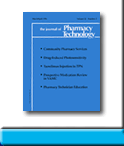 |
 |
Compliance with Antibiotic Dosing Guidelines in Critically Ill Patients Receiving Renal Replacement Therapy
Suneel Udani, Ling-Xin Chen, Mitchell Daley, Ishaq Lat,
Jay L Koyner
To request full article click here.
Background: Compliance with antibiotic dosing guidelines and achievement of target serum concentrations in patients with infection who are on renal replacement therapy (RRT) is complex, essential for supportive care, and not well studied.
Objective: To determine adherence rates to antibiotic dosing guidelines in the setting of RRT in the intensive care unit (ICU).
Methods: We conducted a retrospective, single-center, cohort study evaluating antibiotic dosing in all patients in the ICU receiving RRT between July 2007 and June 2009. Appropriate dosing was determined by comparing dose administered with established guidelines. Dosing was denoted as accurate if adjustment occurred prior to the third administered dose or, if appropriate dosing is every 12 hours or more, within 24 hours. We compared rates according to modality of RRT (intermittent hemodialysis [IHD] vs continuous veno-venous hemodialysis [CVVHD]), indication for RRT (acute kidney injury [AKI] vs end-stage renal disease [ESRD]), and presence of a clinical pharmacist on rounds.
Results: Adherence rates of 546 patients receiving RRT, with 1761 individual antibiotic prescriptions, were analyzed. Dosing errors were more common in the group receiving CVVHD than in the IHD group (58.1% vs 49.5%; p < 0.001). Frequency of dosing errors did not differ significantly between patients receiving RRT for AKI versus those with ESRD (55.4% vs 51.3%; p = 0.24) or in ICUs with or without a pharmacist on rounds (53.0% vs 54.6%; p = 0.67). Underdosing occurred less frequently with a clinical pharmacist on rounds (18.7% vs 31.3%; p < 0.001). However, in-hospital mortality was not significantly different in underdosed individuals compared with the rest of the cohort (52.3% vs 51.6%; p = 0.92).
CONCLUSIONS: Antibiotic underdosing is common. Increased awareness of dose adjustment guidelines for CVVHD and having a clinical pharmacist on rounds may improve rates of underdosing.
J Pharm Technol 2013;29:161-9
|
|
|
||
|

